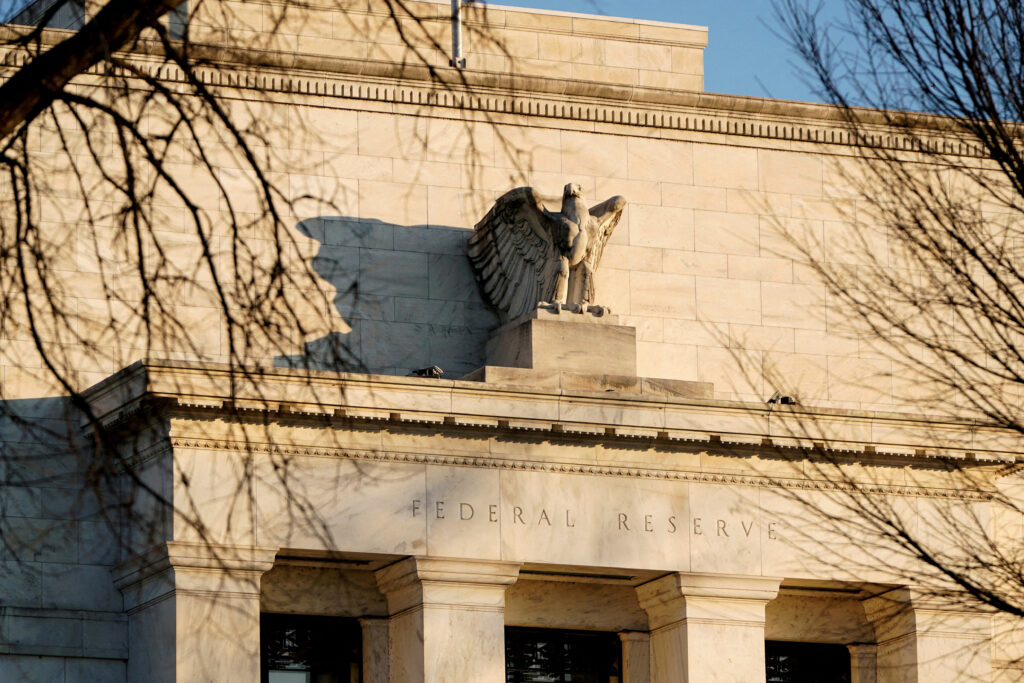U.S. consumer prices rebounded as expected in July. However, the trend remained consistent with subsiding inflation and did not change expectations that the Federal Reserve would cut interest rates next month.
The consumer price index increased 0.2% last month after falling 0.1% in June, the Labor Department said on Wednesday. In the 12 months through July, the CPI increased 2.9% after advancing 3.0% in June.
Economists polled by Reuters had forecast the CPI increasing 0.2% on the month and rising 3.0% year-on-year. The government on Tuesday reported a mild increase in producer prices in July.
The odds of a rate cut at the Fed’s Sept. 17-18 policy meeting are nearly split between half a percentage point and 25 basis points. On Wednesday futures moved slightly in favor of a 25 bp cut, with odds at 60.5% according to LSEG calculations.
MARKET REACTION
STOCKS: U.S. stock index futures extended a slight gain to 0.07% pointing to a steady open on Wall Street.
BONDS: The 10-year U.S. Treasury yield rose to 3.858% and the two-year yield rose to 3.977%.
FOREX: The dollar index pared early slippage to -0.068% and the euro pared its early rise to +0.2%.
COMMENTS
TOM GRAFF, CIO, FACET, PHOENIX, MARYLAND
“CPI came in largely in line with expectations. The monthly Core figure was 0.2%, exactly as expected. The details were slightly more favorable than that though. Almost all of the increase for the month came from shelter. Since this has a somewhat lower weighting in Core PCE, this implies that the Fed’s favored inflation measure will come in a bit below the CPI.
“If there had been any doubt before, this certainly seals the argument for a September rate cut from the Fed. However, it does not necessarily add to the argument for a 50 bps cut. The Fed could very well choose to take it slower with their first cut and consider larger cuts later.”
DAVID DOYLE, HEAD OF ECONOMICS, MACQUARIE, TORONTO
“The report isn’t quite as favorable for disinflation as what occurred in June, but that report set a very high standard.”
“Overall the report provides more reinforcement that the disinflation trend remains intact. It should provide the FOMC with increased evidence that the upturn in underlying inflation that occurred in 1Q24 was temporary and has reversed course.”
“There is nothing in here that should prevent the Fed from proceeding with a rate cut in September. The pace of magnitude of easing will depend broadly on incoming data with inflation and employment figures taking on particular importance. Our baseline for a September cut is for this to be 25 bps.”
ILYA VOLKOV, CEO, YOUHODLER, LAUSANNE
“The CPI slightly decreased as anticipated, which is positive news for equity markets. The EUR/USD pair will likely continue its upward trend, with the next resistance level in the 1.12-1.13 range. This favorable data could prompt the Fed to consider a 50 basis point rate cut next month. Market sentiment may push the DXY lower, further supporting EUR/USD in the near term.”
GENNADIY GOLDBERG, HEAD OF US RATES STRATEGY, TD SECURITIES, NEW YORK
“The one thing that was surprising here was rent accelerating. I think that’s the reason for the market’s somewhat disappointed reaction, even though the print actually came in on the weaker side of consensus. I do think the market is reassessing the odds of a 50 basis point rate cut in September. That pricing seems to have dropped from about 39 base points ahead of the reading to 36 basis points now. So I do think that the market is thinking that inflation is a little bit more sticky than the Fed was expecting, and they’re penciling out some of that 50 basis point pricing.”
“Other than that, I think this really checks the box for the Fed to go in September. And of course, the big question for the market is going to be 25 or 50, and I suspect that’s going to be determined over the next couple of weeks.”
JACK MCINTYRE, PORTFOLIO MANAGER, BRANDYWINE GLOBAL, PHILADELPHIA
“CPI is important but in the hierarchy of economic data, in terms of its market impact, it’s probably moved into about the third. You’ve got payrolls, retail sales, and inflation, so it’s not as quite as important.”
“Financial assets have done well lately, we had PPI and we had a good reaction to that, so maybe the bar is a little bit higher, but I suspect that when the dust settles, nothing has changed.”
“It clearly gives the Fed room to cut rates so it tells you inflation’s moving in the right direction and the longer the Fed doesn’t do anything, the more restrictive monetary policy is going to be.”
“We don’t know whether it’s going to be 25 or 50, but I don’t think inflation’s going to determine that. It’s going to be the growth-oriented economic statistics, particularly the labor statistics and payrolls.”
RUSTY VANNEMAN, CIO, ORION, OMAHA, NEBRASKA
“Consumer price inflation met expectations today, with headline year-over-year CPI slightly better than anticipated, dropping to 2.9% compared to the expected 3.0%. Last month, headline CPI was also at 3.0%. Considering this week’s inflation data, including yesterday’s PPI numbers, and the decline in market-based and survey-based short-term inflation expectations to multi-year lows, the strong possibility of a Fed rate cut in September remains on the table.”
GERRIT SMIT, HEAD OF GLOBAL EQUITY MANAGEMENT, STONEHAGE FLEMING INVESTMENT MANAGEMENT, LONDON
“The July US headline inflation of 2.9% is the first reading below 3.0% since March 2021, and lower than consensus expectations.”
“This can relax the Fed for a surprise early cut. With this psychological break below 3% investor focus can clearly move on from inflation to economic growth considerations.”
(Source: ReutersReuters)
Kevin Putnam is a financial journalist and editor based in New York. He specializes in editing news and analysis related to U.S. stock market. Read Full Bio





















